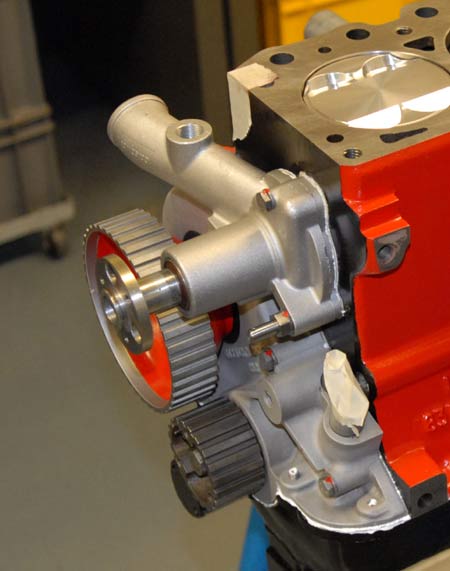Coolant system efficiency
As the specific power of engines continues to increase over time, so does the demand on their cooling systems. And if an engine is delivering, say, 200 kW at any one time then roughly an equivalent amount of heat will also be rejected into the cooling system. Using my electric fire analogy that's 100 two-bar electric fires distributing all this through the vehicle radiator and into the local environment, and when put like that, it is a wonder we don't see more issues with the cooling system recirculating pump than we actually do. But in trying to make engines more powerful still and reduce the parasitic losses of the pump, is there anything we can do to make cooling systems even more efficient?
Let's start by looking at the basics. Since power is roughly proportional to speed, an engine operating on wide-open throttle at 6000 rpm will deliver roughly twice as much power than at 3000 rpm. That means twice as much heat rejected to the cooling system, requiring more or less twice the coolant flow rate. As coolant pumps are designed to cope with the extremes of heat, the mechanical pump geared off the engine crankshaft would seem to be a most efficient way of doing things. However, engines don't always run at wide-open throttle for long periods, so an engine running at part-load will deliver a lot less heat and therefore may not require the pump to run at anywhere near the performance level required for full-load running.
In the past, pumps with adjustable shrouds, which can alter the flow rate without altering the speed of the unit, have been tried but the extra complication and durability concerns have always outweighed the advantages. At a time when all things related to vehicle onboard control results in more electrical/electronic components, the practical solution would seem to be the electric coolant pump, digitally controlled.
When powering the pump from the vehicle's battery, which is not being recharged by an engine-driven generator, the power gained in not driving the coolant pump at 2-3 kW must be worth having. It follows that so long as the total installation weight is no greater than that of the more traditional mechanical approach, the use of an electric pump is a 'no-brainer'. Thus, disciplines such as hillclimbing and sprinting, where the duration of each run does not require the use of an alternator, are obvious applications for the electric coolant pump.

When you introduce an alternator to recharge the battery it is necessary to consider the expected duty cycle and the battery-charging strategy. If the battery is to be recharged continuously, at engine full load the conversion efficiencies between generating the electrical power and then powering the pump have to be taken into account. However, if the battery is to be recharged only when at part- or off-throttle then the case for an electric pump is much more compelling. In either case, removing the direct relationship between pump speed and engine speed allows for potentially more efficient cooling, particularly where pump speed is under the control of the engine management system.
This needs to be considered in the context of the type of racing. The flexibility of the electric coolant pump can clearly pay dividends in rallying and endurance racing, more so than in wide-open throttle oval track sprint racing. At Le Mans the engine has to be shut down during refuelling, and the electric pump permits coolant to continue to circulate, reducing heat soak.
The use of an electric pump removes the need for a thermostat, and might also help in terms of overall car packaging, since it can be mounted off the engine. Thus the use of an electric coolant pump needs to be considered as part of the whole cooling strategy, and in many applications it clearly has a lot to offer.
Fig. 1 - Mechanical coolant pump
Written by John Coxon